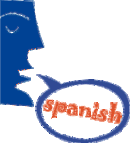HOW ARE YOUR SPANISH REFLEXES?

Whenever you are reading Spanish or listening to a Spanish conversation, have you wondered why the word “se” is used? Not to be confused with sé, which is the conjugated form of saber to say “I know (facts, information)”, the pronoun ‘se’ seems to creep into a lot of Spanish sentences seemingly at random. Many times I have asked myself, “why is the ‘se’ there”? One of the reasons ‘se’ is used is to make verbs reflexive.A reflexive verb in Spanish (or English) is one in which the action of the verb stays with the subject. For example: I did it myself. She made it herself, we saw ourselves in the mirror. The myself, herself, ourselves, ‘reflects’ the action back to the subjects performing the action.
 Reflexive verbs are yet another area in Spanish that we must face sooner or later if we are to improve our Spanish skills. Verbs are reflexive more often in Spanish than in English. When a Spanish verb is used reflexively and not so in English, it can sound odd to us. But it will sound very odd if you forget to make a Spanish verb reflexive when it is called for.
Reflexive verbs are yet another area in Spanish that we must face sooner or later if we are to improve our Spanish skills. Verbs are reflexive more often in Spanish than in English. When a Spanish verb is used reflexively and not so in English, it can sound odd to us. But it will sound very odd if you forget to make a Spanish verb reflexive when it is called for.
In English a man might say: “I shaved this morning”, In Spanish, that same person would say “I shaved myself this morning”. If the ‘myself’ is not used it does not sound right. Or in English one could say “She took a bath last night”. In Spanish it would be said like this: Herself, she took a bath last night. The ‘herself’ sounds unnecessary to us. But this is the way it is said in Spanish.
That really is the basic theory of reflexive verbs. The trick is to know what Spanish verbs are most often used reflexively and how to make a verb reflexive if required. Keep in mind that all verbs can be used reflexively or not. It just depends on the context of the sentence. I can give myself a bath. This would be reflexive. But if I give my dog a bath, this would not be reflexive. “Me baño.” I bathe myself. “ Baño al perro.” I bathe the dog.
So how is a verb made reflexive in Spanish? The answer is with a reflexive pronoun. The verb is conjugated normally depending on the tense you are in and who or what you are talking about. The pronoun is placed before the conjugated verb. Or, if there is an infinitive in the sentence, it can be placed after. The reflexive pronouns below are the Spanish way of saying myself, herself, ourselves, itself, themselves, and so on. Here are the four Spanish reflexive pronouns:
ME- myself.
TE- yourself (informal).
NOS – ourselves.
SE – yourself (formal), him-herself, itself, themselves.
For those of you who are not familiar with Spanish pronouns this may seem difficult. Sometimes Spanish pronouns appear backward and in the wrong place from English. Also, their use can seem to be unnecessary, especially when they are used reflexively. But don't worry (yourself) too much. Just use this lesson to introduce yourself to their basic use.
Ok, ready? Let’s look at a few Spanish verbs that are almost always used reflexively. By the way, when you see an infinitive reflexive Spanish verb listed in a dictionary for example, it will be followed by the ‘se’. This will indicate that it is used reflexively more often than not. Some dictionaries will list a verb both ways and give examples of when it is used reflexively and when it is not. Note the verb conjugation and the placement of the reflexive pronoun in the examples below:
Ducharse: To shower (oneself) – Me voy a durchar esta mañana. – I am going to take a shower this morning.
Notice the placement of the reflexive pronoun in front of the conjugated verb ‘ir’ (voy). It literally translates to: Myself, I am going to take a shower this morning. Or in this example you can place the pronoun at the end of the infinitive verb instead: Voy a durcharme esta mañana. I am going to take a shower, myself this morning. Either way it means the same in Spanish.
Lavarse: To wash (oneself) – Se lavan las manos antes de comer. – They wash their hands before eating. Literally translates to: Themselves, they wash their hands before eating. In this sentence the pronoun can only be placed before the conjugated verb. If you place the reflexive pronoun before the conjugated verb every time, you will always be right.
Secarse: To dry (oneself)- We dry (ourselves) after showering. – Nos secamos despues de duchar.
Pesarse: To weigh (oneself)- Are you going to weigh (yourself) after working out (informal)? ¿Te vas a pesar después de hacer ejercicio? Or, ¿Vas a pesarte después de hacer ejercicio?
Do you see the general idea? As long as the action of the verb does not leave the subject(s) performing the action, it is reflexive. This happens a lot more often in Spanish. Here are a few more:
Afeitarse- to shave (oneself),
Pienarse- to comb (one’s) hair,
Vestirse, to dress (oneself).
Acostarse, to go (oneself), to bed.
Quedarse, to stay somewhere, (oneself).
Spanish reflexive verbs are also used the same way we sometimes use the English verb ‘to get’:
Casarse: To get married. Se casaron. - They got married.
Cansarse: To get tired. I got tired. - Me cansé
Mejorarse: To get better. The weather got better. – El tiempo se mejoró.
Enfermarse: To get sick. Did you get sick last night? – ¿Te enfermaste anoche? (Informal).
Asustarse: To get scared. We got scared at the movies. – Nos asustamos en el cine.
Keep in mind ‘to get’ in English is used in many ways. You can’t always use reflexive verbs like the ones above for all of the ways we use ‘to get’ in English. There are several other non-reflexive verbs to mean ‘to get’ in Spanish. It just depends on what you are trying to say.
One peculiar way that reflexive verbs are used in Spanish are with inanimate objects. Things and objects in Spanish tend to do things to themselves, even though a human action is required. Sometimes the action performed by a person or persons is ignored. When speaking this way, ‘se’ is the only reflexive pronoun that is used. Look at a few easy examples:
The mall opens (itself) at 7:30am. - El centro commercial se abre a las seite y media por la manaña.
What time does the restaurant close (itself)? – A qué hora se cierra el restaurante?
The sun sets (puts itself) around 8:00 at night. – El sol se pone a eso de a las ocho en la noche.
The river overflowed (itself) yesterday. – El río se desbordó ayer.
The glass broke (itself) on the floor. – El vaso se quebró en el piso.
Lastly, let’s look at ‘ir’ (to go) and how it is used reflexively. It is easy to remember. Whenever you want to say, “to leave” Irse is used. But only “to leave”. It does not mean ‘to go out’ or ‘to go’. Look how it Irse is used:
I have to leave. – Me tengo que ir. Or, Tengo que irme.
They left at 5pm. - Se fueron a las cinco.
We will leave tomorrow. – Nos irémos mañana (future tense).
Are you leaving right now? – ¿Te vas ahora mismo? (informal).
Are you leaving day after tomorrow? ¿ Se va pasado mañana? (formal).
Remember there are a lot of other situations when Spanish verbs are used reflexively. But understanding and being able to use the above will allow a very good start at this difficult area of Spanish. Try making up your own sentences with these and other reflexive verbs. See if you can place the pronoun and conjugate the verb correctly. Practice saying them out loud and memorize them. Look for opportunities to use them in real-time conversation (which is what it is all about).
So how is your Spanish learning going? Frustrated at times? Me too. But look back and see how much more Spanish you know now than you did say, six months ago. Remember it is a long-term deal to learn Spanish. Just keep at it and keep it fun.
Hope this helps!
Sincerely,
Fred
*****
 Hi, my name is Fred. My background in Spanish is a year in high school
Hi, my name is Fred. My background in Spanish is a year in high school
(long ago) and the last five years taking private lessons almost daily, in
the States and in Panamá'. I am not yet fluent, but maybe I can pass
on to you some tips to help your Spanish learning experience.
